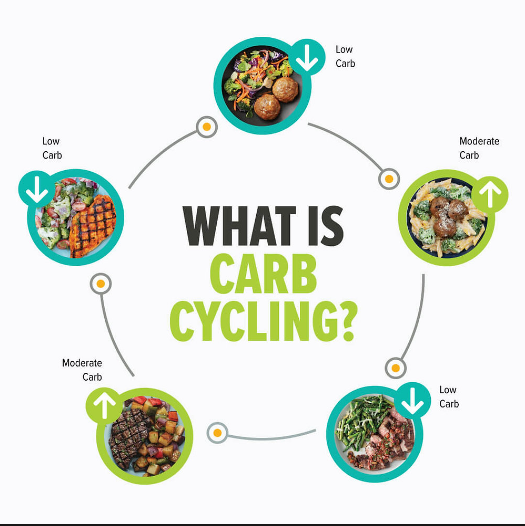What is carb cycling, and should I give it a shot? You’ll learn what carb cycling is, if it’s effective, and how to use it. We’ll also go over who should carb cycle and the dangers that come with it, according to nutritionists.
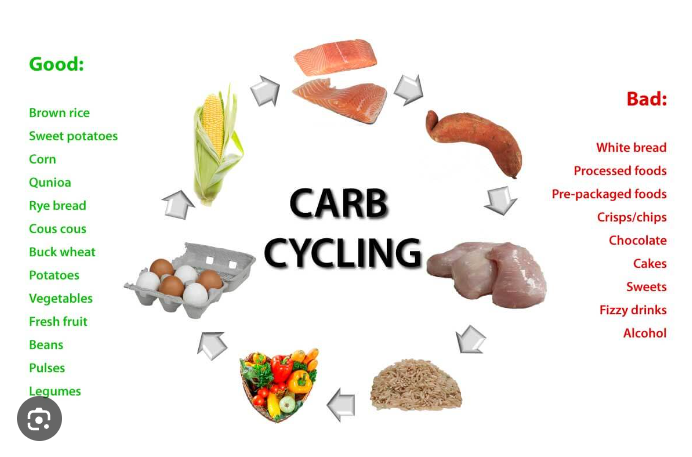
Also read-Are Seed Oils And Vegetable Oils Bad For You?
Carbohydrates have developed a terrible reputation during the past ten or so years. The macronutrient has received a bad rap from a number of fad diets and diet programs because they claim it causes weight gain, bloating, lethargy, and other problems. Many eating regimens now strictly restrict the amount of carbohydrates adherents ingest in an effort to counteract the rising obesity rates in the United States.
However, not all carbs are bad. They actually supply the majority of the energy your body needs. More specifically, the digestive system breaks down the food we eat. Glycogen, the main fuel that cells need to generate energy to power our abilities to do everything from think and type to sprint to catch the bus, is created when carbohydrates are broken down.
So, how can you determine the correct carbohydrate intake that will maintain your ideal weight without depleting your energy? We now come to carbohydrate cycling. This strategy allows you to control your carbohydrate intake to promote weight loss and maybe other health advantages.
What is carb cycling?
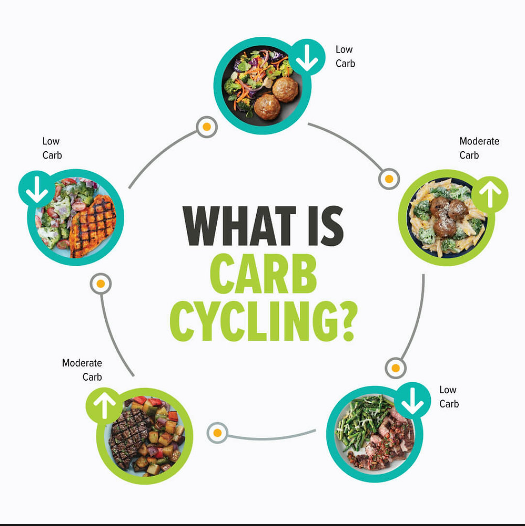
Kacie Vavrek, a sports nutritionist at the Ohio State University Wexner Medical Center in Columbus, explains carb cycling simply as intentional increases and decreases in carbohydrate intake.
According to Toby Amidor, a Wall Street Journal bestselling author of “The Best 3-Ingredient Cookbook” and a Wall Street Journal award-winning nutrition expert located in New York, this idea is influenced by the world of competitive athletes who frequently adjust their nutrition before to tournaments.
She says that endurance athletes, such as marathon runners, have historically used carbohydrate cycling to maximize energy. The custom among athletes is to have more carbohydrates, such as pasta and bread, on days when they engage in strenuous physical activity and fewer carbohydrates on days when they engage in less physical activity.
How Does Carb Cycling Work?
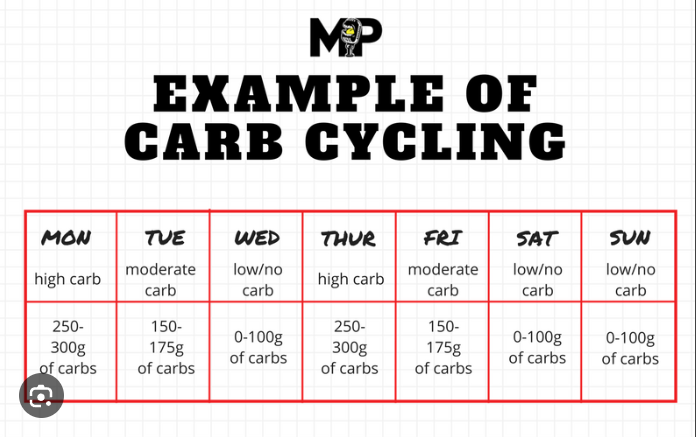
Carb cycling, as mentioned, boils down to a give-and-take depending on your activity level: more carbs on exercise-heavy days, fewer carbs on more restful days.
This cycling can also be flexible. For instance, a carb cycling program can last for a week or several weeks, depending on your needs, says Mary Sabat, an ACE-certified personal trainer and nutritionist and owner of Body Designs in Alpharetta, Georgia. It’s not a long-term approach, though; carb cycling typically only lasts for a specific period.
“(There are also) no set guidelines,” Vavrek adds. “Carb cycling can be done in different ways.”
According to Amidor, what is consistent is the goal: to force the body to use fat as fuel instead of carbs in the form of glycogen. That goal can potentially lead to weight loss.
How To Use a Carb Cycling Diet for Weight Loss
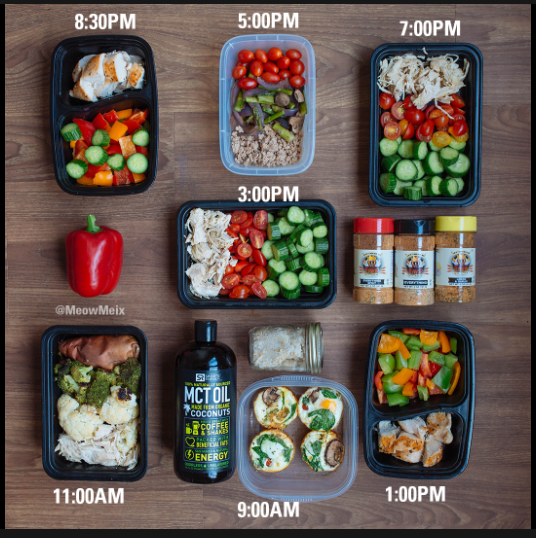
Theoretically, carb cycling can help you achieve your health and weight loss goals by balancing days of lower carb intake with days of higher intake.
According to Sabat, for instance, “on high-carb days, you consume a higher amount of carbohydrates to replenish glycogen stores in muscles and provide energy for intense workouts.”
Instead, on low-carb days, you’ll consume fewer carbohydrates “to promote fat burning and improve insulin sensitivity,” as she puts it.
What Does a Carb Cycle Schedule Look Like?

Lindsay Huelse, a Houston-based retired nurse, fitness expert and creator of the FITT Cycle app and method, has built her carb-cycling approach on a two-day alternating pattern.
“It varies a little depending on the person’s specific biometrics, such as height and weight,” she explains, “but, generally, on the higher-carb days, you’ll be eating 130 to 150 grams of carbs. On the lower-carb days, we drop it down to about 40 or 50 grams of carbs.”
For reference, the average hamburger bun contains about 40 grams of carbs. A cup of strawberries contains about 12 grams of carbs, and a cup of broccoli has about half that amount, or 6 grams. A cup of white rice contains about 45 carbs.
Huelse says a typical week on her FITT Cycle plan looks like:
- 2 days of lower carbs.
- 2 days of higher carbs.
- 2 days of lower carbs.
- 1 day of higher carbs.
Carb cycling meal plans
On the lower-carb days, you’ll eat more high-protein or high-fat foods to make up for the calorie differences when you remove carbohydrates.
A lower-carb day might have you eating:
- Breakfast: Turkey sausage with egg whites.
- Lunch: Filet mignon with asparagus and veggies.
- Dinner: Baked salmon with avocado salsa.
Huelse advises doing greater cardio exercises to aid the body in burning excess fat reserves on days with decreased carb intake.
Your diet on a day when you consume more carbohydrates might consist of the following carbs, a lot of veggies, some healthy fats like avocado or olive oil, and some lean protein:
- Breakfast: A serving of fruit containing about 40 grams of carbs.
- Lunch: A sandwich with two pieces of bread that totals about 40 or 60 grams of carbs.
- Dinner: 4 ounces of brown rice.
Huelse advises doing greater cardio exercises to aid the body in burning excess fat reserves on days with decreased carb intake.
Your diet on a day when you consume more carbohydrates might consist of the following carbs, a lot of veggies, some healthy fats like avocado or olive oil, and some lean protein:
7-day carb cycling plan
Day 1: High-carb day
- Breakfast: 2 scrambled eggs, ½ cup of oatmeal with ½ cup of berries and 1 teaspoon of honey (about 400 calories and 50 grams of carbs).
- Lunch: 4 ounces grilled chicken breast with ½ cup quinoa and 1 cup steamed broccoli with 2 cups of mixed greens salad and 2 tablespoons of vinaigrette dressing (about 400 calories and 50 grams of carbs).
- Snack: 6 ounces of plain, non-fat Greek yogurt with ½ a medium banana (about 150 calories and 20 grams carbs).
- Dinner: 4 ounces baked salmon with ½ cup of brown rice and 1 cup of roasted asparagus (about 400 calories and 35 grams of carbs).
Day 2: Low-carb day
- Breakfast: An omelet with 2 large eggs, ¼ cup spinach, ¼ cup mushrooms and 1 ounce feta cheese(about 350 calories and 20 grams of carbs).
- Lunch: 4 ounces of deliturkey and a small sliced avocado rolled in lettuce leaves (about 450 calories and 25 grams carbs).
- Snack: 4 stalks of celery with 1 tablespoon almond butter (about 100 calories and 5 grams of carbs).
- Dinner: 4 ounces of grilled steak with 1 cup of sautéed spinach (about 350 calories and 30 grams of carbs).
Day 3: Moderate-carb day
- Breakfast: 2 slices of whole grain toast, ½ avocado and 2 poached eggs (about 400 calories and 40 grams of carbs).
- Lunch: 1 cup of lentil soup with 2 cups of mixed greens (about 400 calories and 45 grams of carbs).
- Snack: ½ cup of cottage cheese with ½ cup of pineapple chunks (about 150 calories and 15 grams of carbs).
- Dinner: 4 ounces of baked chicken breast with 1 medium sweet potato and 1 cup steamed green beans (about 400 calories and 50 grams of carbs).
Day 4: High-carb day
- Breakfast: 2 banana and blueberry pancakes with 1 tablespoon of maple syrup (about 300 calories and 55 grams carbs).
- Lunch: Sandwich with 2 slices of whole grain bread and tuna salad and 1 cup of carrot sticks(about 500 calories and 55 grams of carbs).
- Snack: 1 cup of diced mango with a squeeze of lime (about 100 calories and 25 grams of carbs).
- Dinner: 4 ounces of shrimp stir-fried with ½ cup of brown rice and 1 cup of mixed vegetables (about 300 calories and 40 grams of carbs).
Day 5: Low-carb day
- Breakfast: 2 scrambled eggs with 1 cup spinach and 1 ounce feta cheese (about 300 calories and 5 grams of carbs).
- Lunch: 4 ounces of grilled chicken on a small Caesar salad (without croutons) and 2 tablespoons dressing (about 350 calories and 8 grams of carbs).
- Snack: 1 cup of cucumber slices with 2 tablespoons of hummus (about 80 calories and 8 grams of carbs).
- Dinner: 4 ounces of baked cod with 1 cup of roasted Brussels sprouts(about 300 calories and 8 grams of carbs).
Day 6: Moderate-carb day
- Breakfast: 1 cup quinoa with ½ cup mixed berries and 1 ounce almond slices (about 400 calories and 45 grams of carbs).
- Lunch: 4 ounces of turkey and 1 cup mixed veggie stir-fry with ½ cup brown rice (about 400 calories and 35 grams of carbs).
- Snack: 1 cup of grapes with 1 ounce cheese (about 200 calories and 15 grams of carbs).
- Dinner: 4 ounces of baked tofu with 1 cup broccoli and 2 tablespoons sesame ginger sauce, served with ½ cup quinoa (about 400 calories and 35 grams of carbs).
Day 7: High-carb day
- Breakfast: 2 scrambled eggs, ½ cup of oatmeal with ½ cup of berries and 1 teaspoon of honey (about 400 calories and 50 grams of carbs).
- Lunch: 1 cup of lentil soup with 2 cups of mixed greens (about 400 calories and 45 grams of carbs).
- Snack: 1 medium sliced apple with 2 tablespoons peanut butter (about 300 calories and 30 grams of carbs).
- Dinner: 4 ounces of baked chicken breast with 1 medium sweet potato and 1 cup steamed green beans (about 400 calories and 50 grams of carbs).
Is Carb Cycling Safe?

According to Huelse, there are “not many risks with carb cycling unless your physician has you on a specific diet.” But she recommends that you check with your doctor before starting this or any other diet plan.
Amidor and Vavrek, on the other hand, don’t recommend carb cycling and say there are some risks that can be associated with it.
Carb Cycling Tips
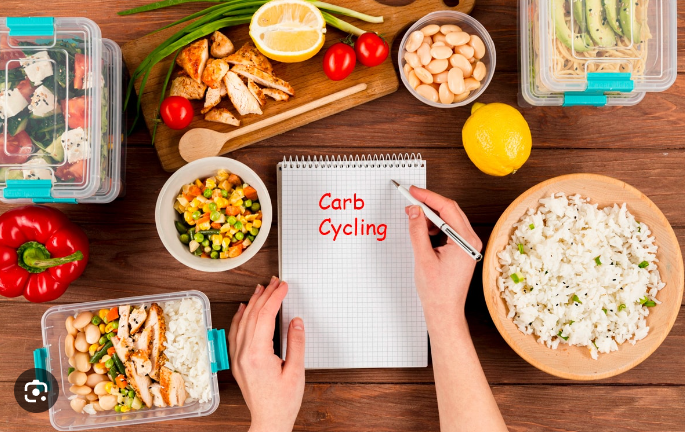
If you’re following a carb-cycling regimen, keep a well-balanced diet – one full of micronutrients – and portion control in mind.
Amidor recommends that if you’re trying to lose weight, choose whole grains, fruit and other “good carbs,” chock-full of vitamins, minerals and other nutrients. You should also stay away from cookies, cakes and treats with added sugar, which can have empty carbs, or those without vitamins and minerals.
“Using measuring cups to help keep carb portions under control can help minimize overconsumption of foods like rice, cereal and other carbs,” she adds.
The Bottom Line
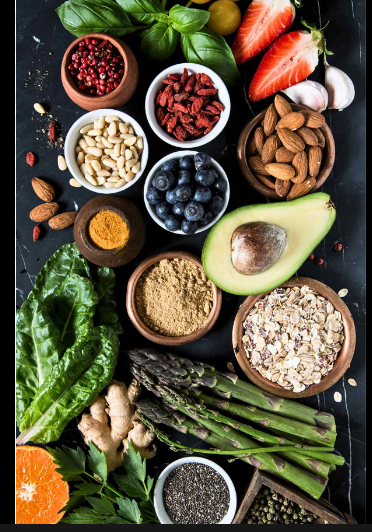
Carb cycling is best suited for those who are already familiar with their nutritional needs and have specific fitness goals, experts say.
“It may not be necessary or appropriate for casual exercisers or those without targeted fitness objectives,” Sabat says.
She also encourages those interested in trying carb cycling to talk with a registered dietitian or their health care provider for more tailored recommendations and advice.
As with any kind of diet, it may take time to find the right approach for your body.
“Nutritional strategies should be part of a balanced lifestyle and individualized based on your unique circumstances,” Sabat explains.
Also read-The Best Foods for Kidney Stone Prevention
images source-google







